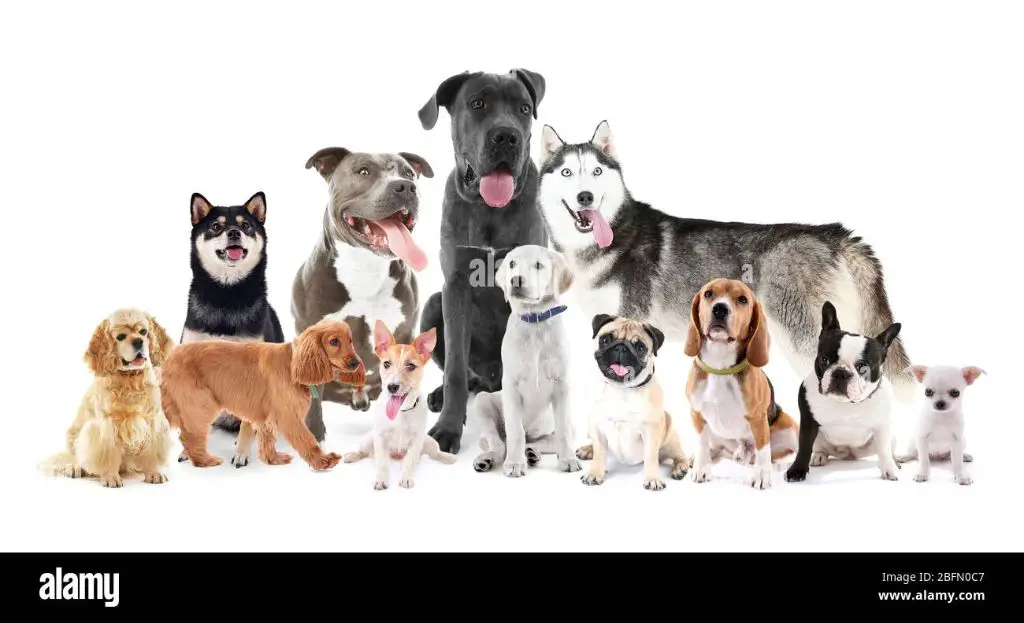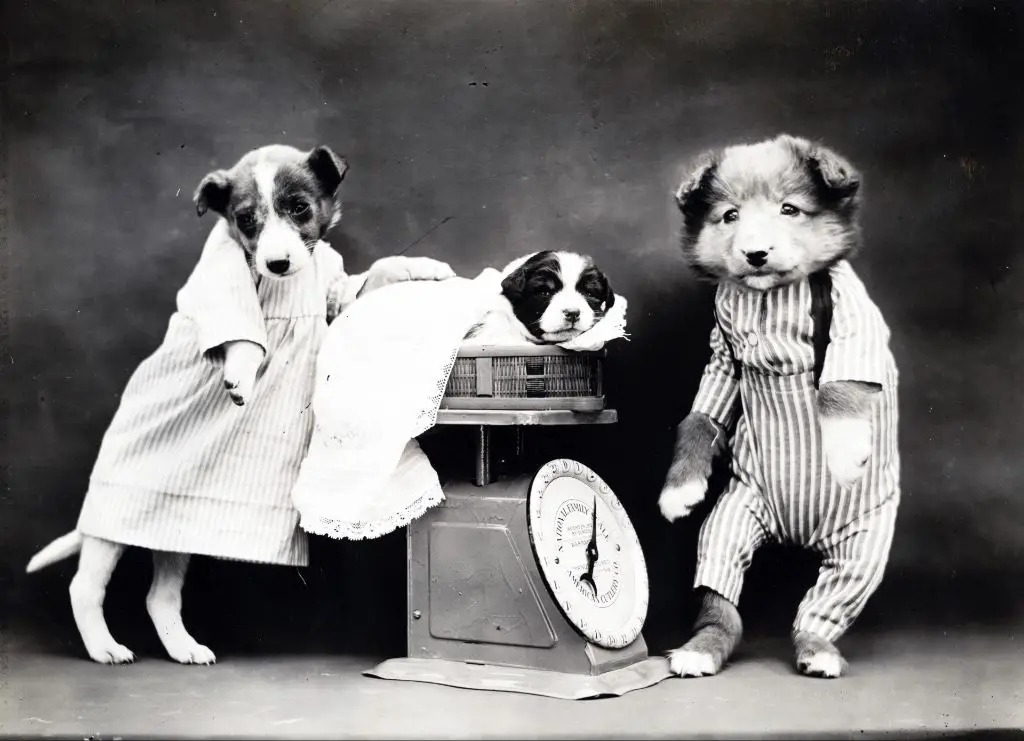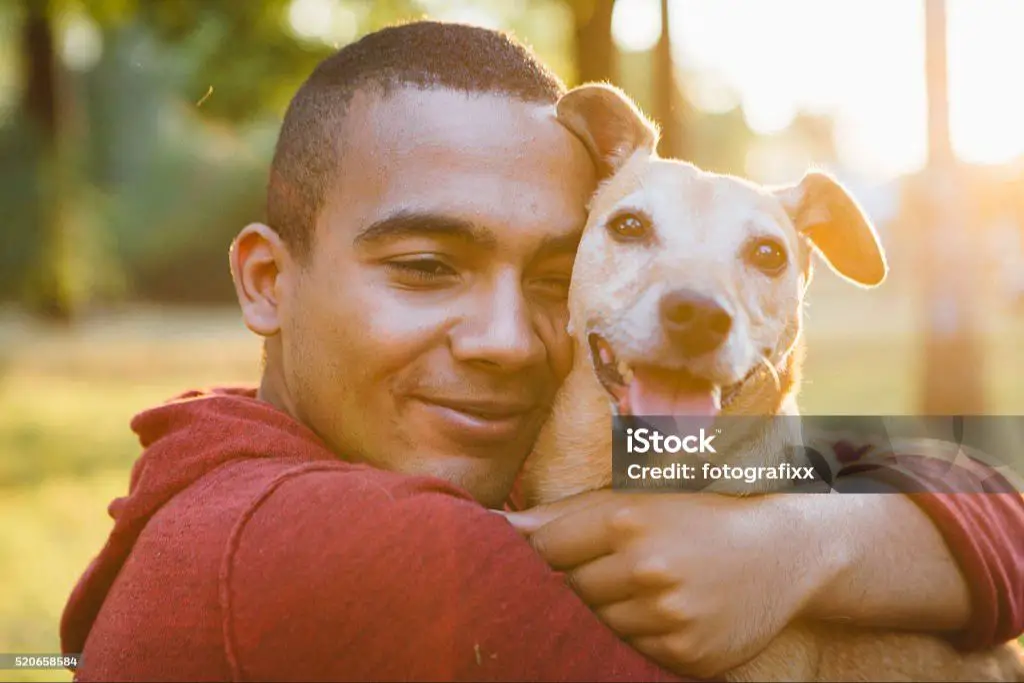Introduction
The term “mutt” is commonly used to describe dogs that are of mixed ancestry, with two or more different breeds in their family tree. However, there is often confusion and debate around what exactly constitutes a mutt. Some people use the word to refer to any mixed breed dog, while others reserve it for dogs of uncertain origin that are not deliberately crossbred.
For the purposes of this article, a mutt will be defined as a dog with multiple breeds in its heritage, where the exact genetic makeup is unknown. Many mutts are born accidentally when two purebred or mixed breed dogs of different backgrounds mate. Others are born from litters where the parentage included some mix of purebred and mixed breed dogs. Unlike deliberately crosses like Labradoodles or Cockapoos that are bred from two known pure breeds, mutts have more complex genetic histories from unknown combinations of breeds.
There is often stigma around mutts in comparison to purebred dogs, mainly stemming from the perception that their ancestry and traits are unpredictable. However, mutts can make wonderful pets. This article will explore the intricacies around defining mutts, weigh the advantages and disadvantages of owning one, and provide perspective on why they should not be viewed negatively compared to other dogs.
Breed Standards

A purebred dog is one that has been bred over many generations to breed true, meaning each puppy that is born displays very similar and predictable characteristics. For each recognized dog breed, there is a standard that describes the physical characteristics, temperament, abilities and traits that are desired for that breed.
Breed standards are created and maintained by breed registries and kennel clubs like the American Kennel Club (AKC) or United Kennel Club (UKC) in the United States, and The Kennel Club in the UK. These standards act as a blueprint that breeders use to produce litters that closely match the ideal for that breed. Standards describe specifics like height, weight, coat color and texture, head shape, tail shape, gait and more.
While individual dogs within a breed can vary somewhat from the standard, following the standard ensures that breeds maintain uniformity and keep their distinguishing characteristics over generations. Breed standards also allow fanciers and breeders to evaluate how close each dog matches the ideal for that breed.
Mixed Breed Dogs
A mixed breed dog is one that has parentage from two or more recognized dog breeds. Unlike a mutt, which is a dog of unknown genetic heritage, mixed breed dogs have documented parentage of specific breeds. Responsible breeders producing mixed breed puppies will provide records verifying the parental lineages.
Mixed breed dogs exhibit physical and behavioral traits from their diverse genetic backgrounds. While mutts inherit random combinations of genes that lead to unpredictable traits, controlled cross-breeding allows for certain desired characteristics to be passed down in a intentional way. This allows mixed breed dogs to combine positive attributes like the intelligence of a Poodle with the loyalty of a Golden Retriever.
Since the genetic makeup of a mixed breed dog is known and documented, their traits and temperament can be predicted to a degree. Mutts have much more variability since their ancestry is uncertain. Mixed breed dogs offer more predictability and uniformity within a litter. Additionally, health screening of the parents helps minimize risk of inherited genetic disorders.
In summary, mixed breed dogs have verified pedigrees from two or more breeds, leading to more predictable outcomes compared to totally random-bred mutts of unknown origin. Responsible breeding practices for mixed breeds allow them to retain the best qualities of their parentage.
Origin of the Term “Mutt”
The term “mutt” has been used to describe mixed breed dogs for over a century. It is believed to have originated in the 1890s, derived from the word “muttonhead” which was slang at the time meaning a stupid person. The word “mutt” was first used to imply that mixed breed dogs were inferior and unintelligent compared to purebreds.

In the late 19th and early 20th centuries, the eugenics movement promoted “racial purity” and looked down upon crossbreeding of any kind. This prejudice extended to dogs, with kennel clubs emphasizing pedigrees and breed standards. Mutts were seen as “mongrels” with diluted and defective bloodlines. The word “mutt” therefore took on a very negative connotation, implying these dogs were worthless, defective, and unintelligent.
The stigma around mutts persisted for decades, especially among show dog enthusiasts and kennel clubs. Even today, the term “mutt” continues to carry subtle negative undertones, hinting that mixed breeds are inferior or undesirable compared to purebred dogs. However, public perception of mixed breed dogs has gradually improved over time as more people come to appreciate their unique qualities and advantages.
Is Mutt an Offensive Term?
The term “mutt” is controversial in dog circles. Some view it as an offensive slur, while others see it as a harmless descriptor of mixed breed dogs. Those against using mutt argue that it implies the dog is inferior, defective, or somehow “less than” a purebred dog. The word has origins from the Old English “mutte” meaning stray dog or mongrel. Because of this history, some feel mutt promotes harmful stereotypes and should be avoided.
On the other side, many owners of mixed breeds happily embrace the term mutt. For them, it simply indicates their dog’s blend of multiple breeds without any negative connotation intended. Some see rejecting mutt as buying into outdated purebred snobbery. These owners argue that breeding diversity should be celebrated, not stigmatized. According to this view, applying labels like hybrid or designer dog to mixed breeds just replicates the problematic obsession with pedigree.
Ultimately there are good faith arguments on both sides of this debate. Those who refrain from saying mutt often do so to be sensitive to the objections raised. But many mixed breed owners also proudly call their beloved pups mutts. This remains an area where opinions diverge within the dog community.
Advantages of Mixed Breeds
Mixed breed dogs, often referred to as mutts, can have many advantages over purebred dogs. Here are some of the key benefits:
Health
Mixed breeds tend to be healthier than purebreds. By breeding dogs of different breeds, you get a larger mix of genes, which reduces the risk of inherited disorders common to particular breeds. For example, Labradoodles are generally healthier than purebred Labrador Retrievers.
Unique Traits and Appearances
No two mutts look exactly the same. While purebreds conform to the breed standard, mutts display a wide range of colors, coat types, sizes and other features. This diversity and uniqueness is part of their charm for many owners.
Mutts also tend to have a good combination of traits from their parent breeds. For example, a mix of herding and sporting dogs may have strong herding instincts as well as athleticism and energy.
Hybrid Vigor

Mixed breed dogs benefit from “hybrid vigor” – increased health, lifespan, and stamina from genetic diversity. Crossing two purebreds often produces puppies that outperform their parents. The gene pool is expanded, resulting in dogs potentially healthier than closely bred purebreds.
Disadvantages of Mixed Breeds
While mixed breed dogs can make wonderful pets, there are some potential drawbacks to consider when adopting one:
Unpredictable traits – When you adopt a purebred dog from a responsible breeder, you generally have a good sense of that breed’s typical size, appearance, temperament and exercise needs. With a mixed breed, it’s hard to predict which parent breed certain traits will take after. This makes it more challenging to prepare for a mixed breed puppy.
No breed standards – Without an established breed standard, it’s difficult to know if structural and health issues are normal for that mix. Some mixed breeds like Labradoodles now have unofficial standards, but most don’t. This means there are no guidelines for responsible breeding of mixed breeds.
Potential health issues – Some purebreds are prone to certain genetic conditions. Mixing breeds that share some of the same health problems could increase the chances of inheriting those diseases. Reputable breeders screen parent dogs, but this is less common with accidental litters.
Training challenges – Different breeds have different personality traits, intelligence levels and trainability. A mixed puppy might be more stubborn, energetic or distractable than anticipated based on the parent breeds. Owners should be adaptable and patient when training mixed breeds.
Options Beyond Mutt
The term “mutt” has long been used to refer to any dog that has more than one breed in its recent ancestry. But lately some alternatives to the term “mutt” have emerged when referencing mixed breed or cross-breed dogs:
Hybrid Dog: This term is used to describe a dog that has two different purebred parents, like a Labradoodle (Labrador Retriever + Poodle) or Puggle (Pug + Beagle). While “hybrid” indicates a specific cross between two breeds, it is sometimes used as a broader term for any mixed breed dog.
Designer Dog: This refers to a dog that has been deliberately crossed between two purebreds. The goal is to produce a dog with specific, predictable traits from each of the parent breeds. Popular designer dogs include Labradoodles, Morkies (Maltese + Yorkie), and Cockapoos (Cocker Spaniel + Poodle).
Breed Mix: Simply referring to a dog as a “mix” or by both breeds in its ancestry (like a “Labrador Retriever-Poodle mix”) avoids using the term “mutt” while still being accurate. A dog could also be called a “mixed breed” to indicate it has more than one breed in its family tree without using the word “mutt.”
So while “mutt” has traditionally been the catch-all for any mixed breed dog, other options like hybrid, designer dog, or breed mix can be used instead for dogs with known purebred parents or ancestry.
The Stigma Around Mutts

Despite the many advantages mixed breed dogs offer, some still view them as inferior to purebred dogs. There are a few reasons this stigma has developed:
– Perception of predictability – With a purebred dog, there is an expectation that you can more reliably predict size, temperament, grooming needs, exercise requirements, etc. With a mixed breed, there is greater uncertainty about which breed traits they will exhibit.
– Desire for prestige – Some people see owning a purebred, especially a rarer breed, as a status symbol. Mixed breeds are sometimes seen as “just a mutt.”
– Show and breeding standards – Purebred dogs have very defined standards for shows and breeding. Mixed breeds don’t conform as neatly to these rules and regulations.
– Assumed health issues – There is a perception that mixed breeds are more likely to have health problems than predictably bred purebreds. In reality, responsible mixing of dogs from different gene pools can actually create healthier puppies.
However, attitudes are starting to change as more people realize and share the advantages of mixed breeds. Public campaigns to adopt from shelters, which are filled with mixed breed dogs, have helped to shine a more positive light on these dogs. With time, hopefully the stigma around being a “mutt” will disappear.
Conclusion
In summary, mutt is a term used to describe dogs of mixed breeds; however, its origins are unclear. Some consider mutt to be offensive, while others embrace it. There are benefits and downsides to mixed breeds compared to purebreds. While mutt has traditionally carried a negative connotation, language is evolving. Many now use mutt in an endearing way and consider their mixed breeds to be unique. The stigma around the term mutt is fading as people recognize that crossing breeds can increase genetic diversity and reduce health issues. When used positively, mutt simply acknowledges the blending of multiple breeds in one dog. With proper care and training, mutts can make wonderful companion animals. The term mutt may persist, but it’s important not to let labels overshadow each dog’s individual temperament.